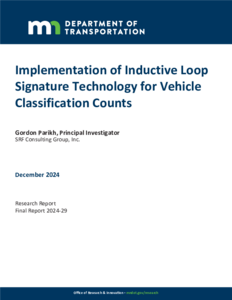Displaying results 1 - 2 of 2
Implementation of Inductive Loop Signature Technology for Vehicle Classification Counts
Date Created
2024-12
Report Number
2024-29
Description


